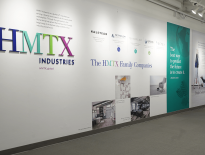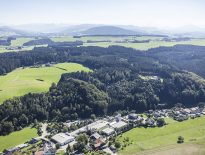Year-End Inventory: Tarkett Celebrates a Decade of Sustainability Wins and Looks Ahead to 2030
The past 30 years have seen unprecedented economic growth around the globe—a condition that many have attributed to our environmental challenges. The United States GDP has grown from ~$5T (1988) to ~$20T (2018). China alone has gone from a mere $300B (1988) to a $13T (2018) economy. In 1992, the Earth Summit in Rio de Janeiro quantified the human effect on the climate, and the nations of the world signed the UN Framework Convention on Climate Change (UNFCCC). By doing so, they promised to “prevent dangerous anthropogenic interference with the climate system”. Since then, humans have emitted 765bn more tons of carbon dioxide. Last year, the IPCC warned that we only have until 2030 to act in order to avoid the worst consequences of severe climate change. However, at this time, only 742 businesses are taking science-based climate action and that’s just the planetary impact. What about the human health impacts of our consumption trends? For example, according to the World Health Organization, every year, 7 million people die early due to air pollution — from more strokes, heart attacks, and deadly lung and respiratory infections. The health impact due to indoor air pollution has also been well documented.
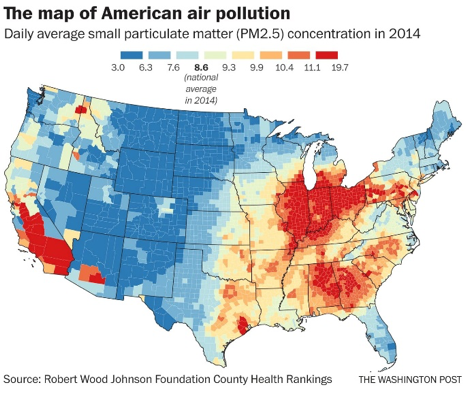
So what, then, is the role of business? Economic growth is not the culprit. To more than 700 million people worldwide living in conditions of extreme poverty, continued economic growth is a must. What needs to change is the nature of that economic activity and its impact on the planet—consumption balanced with collective, massive action by businesses. A few of these necessary changes include:
- Shifting the economy to a path that delivers truly shared prosperity that respects the natural and human capital of our planet.
- Redefining the role of business in society. With changing customer expectations, a long-term purpose is needed.
As a whole, the flooring industry has received criticism in the past for fueling irresponsible consumption, including the amount of waste contributed to landfills. A combination of product design, raw materials selection, unrecyclable product at the end of life and high-energy manufacturing processes have enabled this narrative. A great deal of progress is being made in the industry to overcome this stigma.
As Victor J. Papanak stated, design, if it is to be ecologically responsible and socially responsive, must be revolutionary and radical in the truest sense. Recycling initiatives at Tarkett started as early as 1957, with vinyl production recycling at the Ronneby, Sweden plant. Since 2009, when we formalized our sustainability initiatives, Tarkett has been working toward a responsible economy that other businesses, both inside and outside the flooring industry, can take inspiration from.
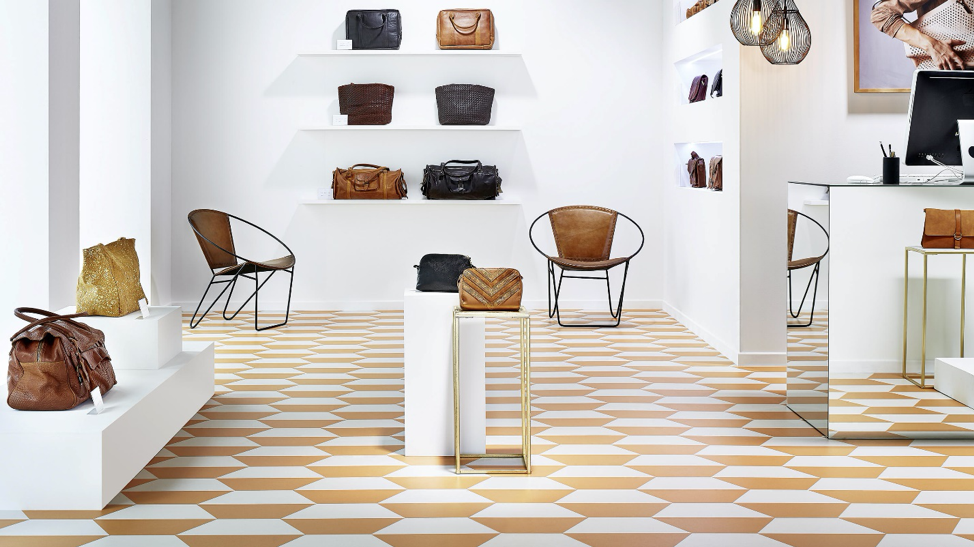
From Linear to Circular Thinking
Our emphasis has been to select materials that can be recovered, recycled and transformed into new products. For example, in 2004, Tarkett North America was the first manufacturer to harness the PVB film in windshields and safety glass, creating a time-tested alternative to traditional carpet backing polymers. With ethos® Modular carpet tile backing, we introduced a safer chemistry and, more importantly, a product that could be recycled at the end of life. From 2004 to 2018, we reused close to 23,500 tons of PVB film from 22.8 million windshields. This type of circular thinking is the most radical way of decoupling economic growth from environmental degradation. Since then, we have minimized resource input and waste, emission, and energy leakage by slowing, closing, and narrowing material and energy loops.
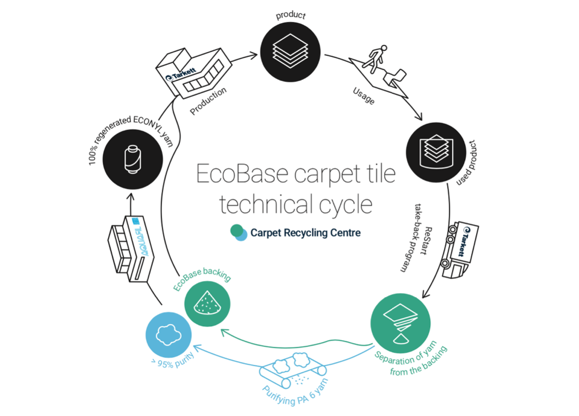
In 2019, Tarkett announced that it is fully closing the loop on commercial carpet tiles in Europe, thanks to a pioneering partnership with Aquafil, the world’s second-largest carpet yarn manufacturer. Using a newly developed technology in Tarkett’s carpet tile facility in Waalwijk, Netherlands, the companies are able to separate yarn fibers from carpet tile backings, providing two streams of materials that can be transformed into high-quality resources, while retaining more than 95% yarn purity. Used yarn becomes new yarn and used backing becomes new backing, creating the industry’s first circular carpet tiles.
Last but not least, Tarkett is now the only carpet-maker in Europe to have verified evidence of closing the loop on carpet tile production, as documented by the Environmental Product Declarations (EPDs) for EcoBase-backed tiles.
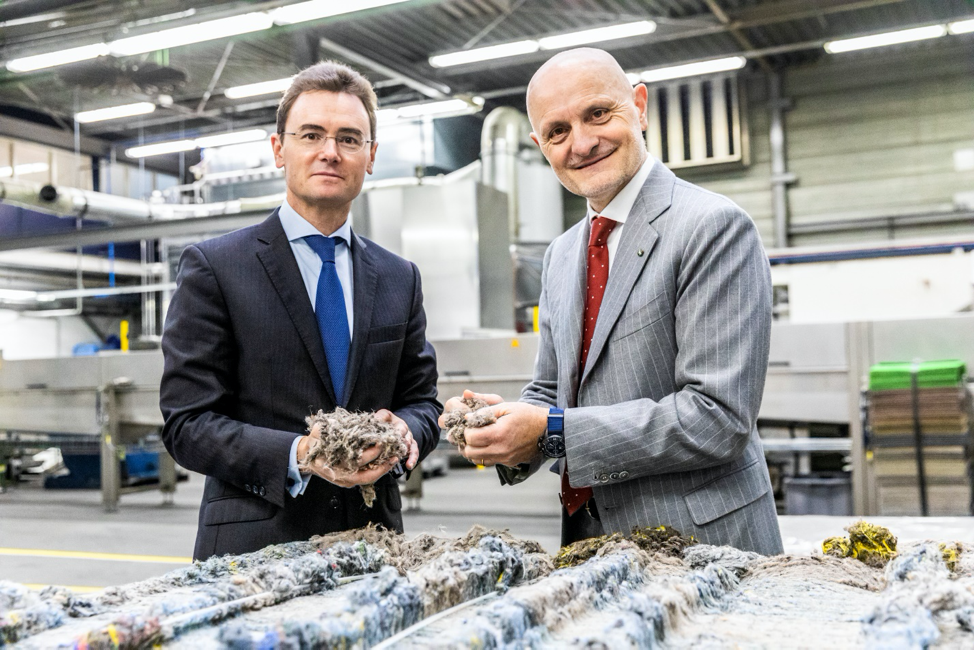
In 2018, Tarkett launched iD Revolution in Europe, a resilient floorcovering developed in line with Cradle to Cradle principles, achieving Platinum level Cradle to Cradle certification for material health attributes. Eighty-three percent of the materials used to make iD Revolution are recycled, or mineral or bio-sourced, helping to conserve natural resources. This includes 24% recycled PVB derived from end-of-life vehicle windscreens or safety glass from buildings, 11% bio plastic (PLA) and 49% chalk, a mineral found in abundance in nature. We take this approach to all of our products, globally.
Enabling Systems-Level Change
Our 2020 goals are driven by our recognition of the severity of planetary and human health impacts of our actions, as well as the need for a comprehensive approach to a responsible economy. In the last 10 years, we’ve set out and succeeded in:
- Having 98% of our raw materials third-party assessed for their health and planet impacts (safer chemistry), as of December 2018. By the end of 2020, our goal is to have 100% of our raw materials assessed.
- Requiring that 70% of our raw materials are recycled, rapidly renewable, or abundantly available in nature—75% by the end of 2020.
- Adopting a phthalate-free technology in 100% of our vinyl production sites in Europe, North America, Serbia and China by the end of 2018, with the remaining sites expected to follow by the end of 2020
- Creating a closed-loop water system in our resilient flooring manufacturing facilities and sourcing 27% of our energy consumption from renewable sources, such as biomass, geothermal, solar or purchased ‘green’ electricity.
- Collecting 102,000 tons of flooring through the ReStart® take-back program in Europe and North-America between 2010 and 2018.
In the process, we have had a profound impact on our suppliers, taking them with us on this journey of conscious capitalism. As we say farewell to this decade, we’re setting goals for 2030, and giving an honest account of some of the challenges we foresee ahead.
Goals & Challenges for 2030
We are now in the process of defining several ways we plan to continue building on the successes of this decade. One thing is for sure: Tarkett will aim to be a Circular Business by 2030. In 2018, we used nearly 134,000 tons of recycled materials as an alternative to virgin materials, which represents more than 10% of our raw materials in purchased volumes. Our new objective for 2030 is to triple this share to 30%. Another ambitious goal for 2030 is about climate. Our aim is to reduce Scope 1 and 2 greenhouse gas emissions intensity by 30%, compared to 2020 (per square meter of manufactured product, kgCO2e/m²).
It is only those companies with a clear and motivating purpose that will make it through the fundamental changes reshaping our world. More and more, businesses are defining their purposes in terms that make important contributions to the achievement of the UN SDGs: responsible consumption and production, health and wellbeing, and climate action, for example. Tarkett will continue to utilize its global footprint, sharing successes in each part of the world with the rest of its partners, so we may all build on each other’s successes. None of this work is easy, and it will take all our combined efforts and ideas to achieve the next wave of progress.
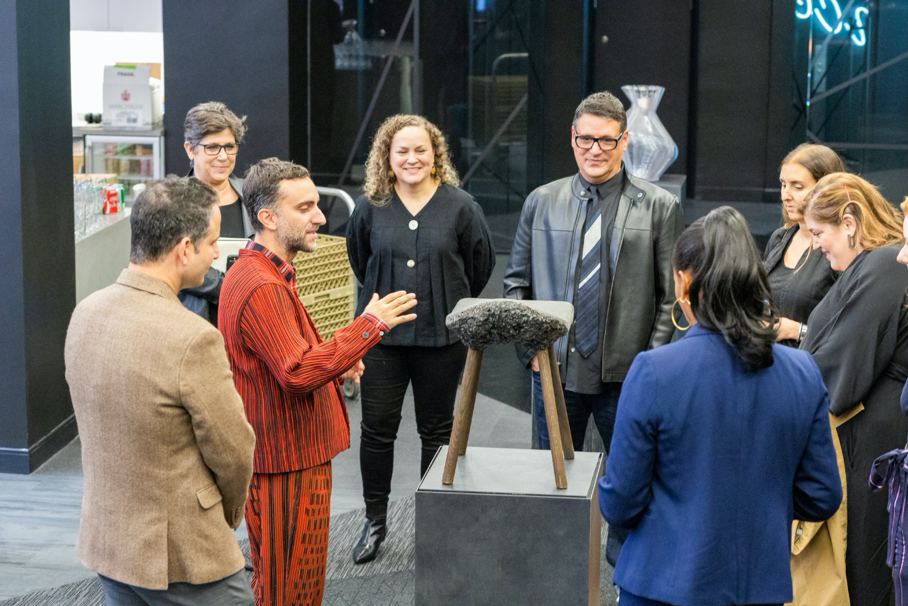
An Invitation
But Tarkett is a €2.8 Billion business and it can only do so much. Business leadership will be defined increasingly by a company’s commitment to collaboration. The vision of leadership as a solitary exercise by a singular visionary leader is not going to suffice. The leaders we need today know the limits of what they can accomplish on their own, know how to partner effectively, and understand that achieving their goals with respect to sustainability can only happen through systemic change. We are facing systemic challenges: an economy that’s driven by consumption, exacerbated inequality, and an industrial system that must shift rapidly in order to meet new realities. It is only with a commitment to large-scale collaboration that we can shift these systems in a more regenerative direction, sooner.

